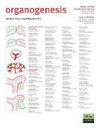性腺性别分化的研究
IF 1.6
4区 生物学
Q4 BIOCHEMISTRY & MOLECULAR BIOLOGY
引用次数: 25
摘要
性腺分化对人类胚胎的性发育具有决定性的影响。性发育障碍(DSD)与持续的胚胎分化阶段有关。1998年至2015年期间,139名患有各种(DSD)的女性患者在俄罗斯莫斯科的妇产科科学中心接受了手术。临床检查包括核型、超声成像、激素测量和性腺形态检查。胚胎中的男性特征是由睾丸激素决定的。当这些缺失或不活跃时,胎儿可能会在发育阶段之间停滞不前,或停留在无关阶段并成为表型上的女性。通过对DSD患者性腺形态的系统分析和文献回顾,我们发现了一些争议,并提出了一个关于性别分化的新假设。性腺中肾系统(小管和小体)的增生刺激性腺向睾丸的男性化。睾丸的支撑支持细胞来源于中肾排泄小管,而间质间质细胞来源于中肾原有的间质。根据新的假说,原来的中肾细胞(小管和小体)可能存在于卵巢薄壁组织中。在雌性性腺中,一些肾中排泄小管退化并失去管状结构,但形成卵巢内膜和外膜,变得类似于睾丸中的支撑性支持细胞。卵巢间质间质细胞来源于中肾的管间质,类似于男性性腺(睾丸)。令人惊讶的是,性腺性别分化的主要决定因素是中肾,以胚胎泌尿系统为代表。本文章由计算机程序翻译,如有差异,请以英文原文为准。
Studies of gonadal sex differentiation
ABSTRACT Gonadal differentiation has a determinative influence on sex development in human embryos. Disorders of sexual development (DSD) have been associated with persistent embryonal differentiation stages. Between 1998 and 2015, 139 female patients with various (DSD) underwent operations at the Scientific Center of Obstetrics, Gynaecology and Perynatology in Moscow, Russia. Clinical investigations included karyotyping, ultrasound imaging, hormonal measurement and investigations of gonadal morphology. The male characteristics in the embryo are imposed by testicular hormones. When these are absent or inactive, the fetus may be arrested at between developmental stages, or stay on indifferent stage and become phenotypically female. A systematic analysis of gonadal morphology in DSD patients and a literature review revealed some controversies and led us to formulate a new hypothesis about sex differentiation. Proliferation of the mesonephric system (tubules and corpuscles) in the gonads stimulates the masculinization of gonads to testis. Sustentacular Sertoli cells of the testes are derived from mesonephric excretory tubules, while interstitial Leydig cells are derived from the original mesenchyme of the mesonephros. According of the new hypothesis, the original mesonephric cells (tubules and corpuscles) potentially persist in the ovarian parenchyma. In female gonads, some mesonephric excretory tubules regress and lose the tubular structure, but form ovarian theca interna and externa, becoming analogous to the sustentacular Sertoli cells in the testis. The ovarian interstitial Leydig cells are derived from intertubal mesenchyme of the mesonephros, similar to what occurs in male gonads (testis). Surprisingly, the leading determinative factor in sexual differentiation of the gonads is the mesonephros, represented by the embryonic urinary system.
求助全文
通过发布文献求助,成功后即可免费获取论文全文。
去求助
来源期刊

Organogenesis
BIOCHEMISTRY & MOLECULAR BIOLOGY-DEVELOPMENTAL BIOLOGY
CiteScore
4.10
自引率
4.30%
发文量
6
审稿时长
>12 weeks
期刊介绍:
Organogenesis is a peer-reviewed journal, available in print and online, that publishes significant advances on all aspects of organ development. The journal covers organogenesis in all multi-cellular organisms and also includes research into tissue engineering, artificial organs and organ substitutes.
The overriding criteria for publication in Organogenesis are originality, scientific merit and general interest. The audience of the journal consists primarily of researchers and advanced students of anatomy, developmental biology and tissue engineering.
The emphasis of the journal is on experimental papers (full-length and brief communications), but it will also publish reviews, hypotheses and commentaries. The Editors encourage the submission of addenda, which are essentially auto-commentaries on significant research recently published elsewhere with additional insights, new interpretations or speculations on a relevant topic. If you have interesting data or an original hypothesis about organ development or artificial organs, please send a pre-submission inquiry to the Editor-in-Chief. You will normally receive a reply within days. All manuscripts will be subjected to peer review, and accepted manuscripts will be posted to the electronic site of the journal immediately and will appear in print at the earliest opportunity thereafter.
 求助内容:
求助内容: 应助结果提醒方式:
应助结果提醒方式:


